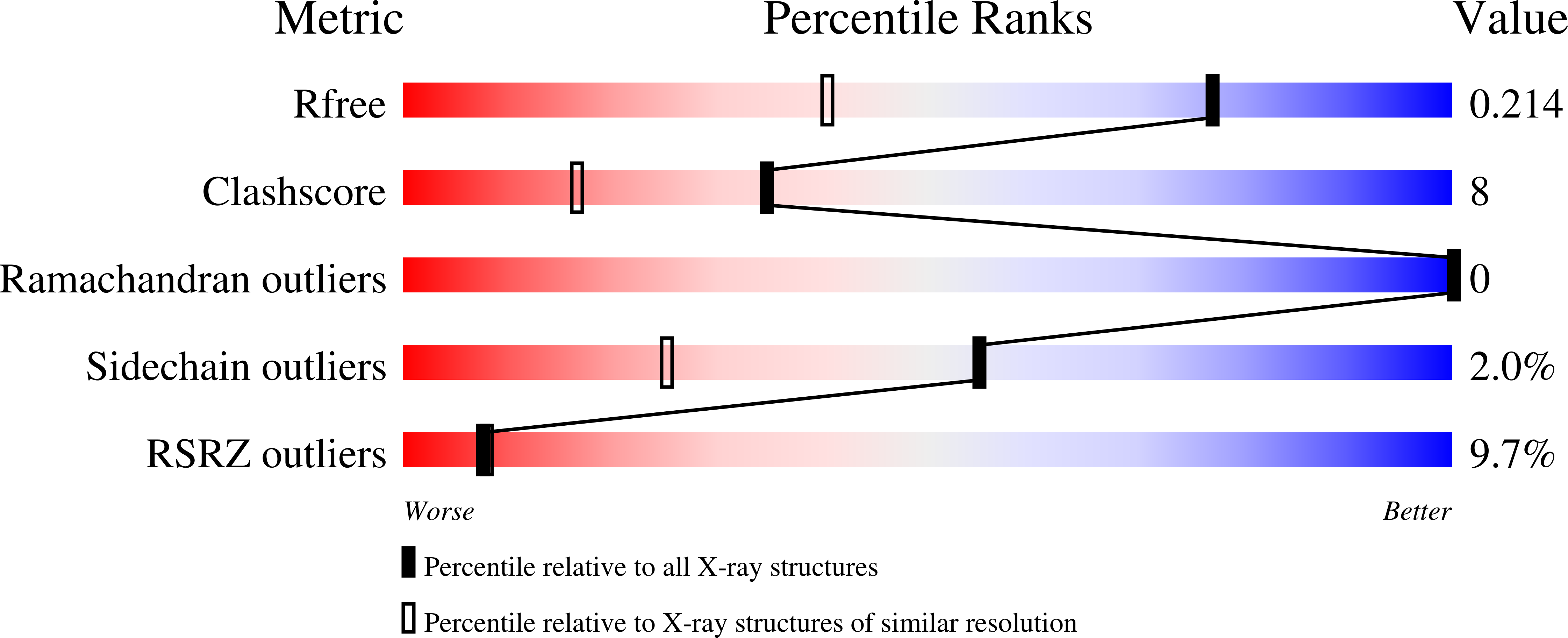Enzymes with lid-gated active sites must operate by an induced fit mechanism instead of conformational selection.
Sullivan, S.M., Holyoak, T.(2008) Proc Natl Acad Sci U S A 105: 13829-13834
- PubMed: 18772387
- DOI: https://doi.org/10.1073/pnas.0805364105
- Primary Citation of Related Structures:
3DT2, 3DT4, 3DT7, 3DTB - PubMed Abstract:
The induced fit and conformational selection/population shift models are two extreme cases of a continuum aimed at understanding the mechanism by which the final key-lock or active enzyme conformation is achieved upon formation of the correctly ligated enzyme. Structures of complexes representing the Michaelis and enolate intermediate complexes of the reaction catalyzed by phosphoenolpyruvate carboxykinase provide direct structural evidence for the encounter complex that is intrinsic to the induced fit model and not required by the conformational selection model. In addition, the structural data demonstrate that the conformational selection model is not sufficient to explain the correlation between dynamics and catalysis in phosphoenolpyruvate carboxykinase and other enzymes in which the transition between the uninduced and the induced conformations occludes the active site from the solvent. The structural data are consistent with a model in that the energy input from substrate association results in changes in the free energy landscape for the protein, allowing for structural transitions along an induced fit pathway.
Organizational Affiliation:
Department of Biochemistry and Molecular Biology, University of Kansas Medical Center, Kansas City, KS 66160, USA.




















